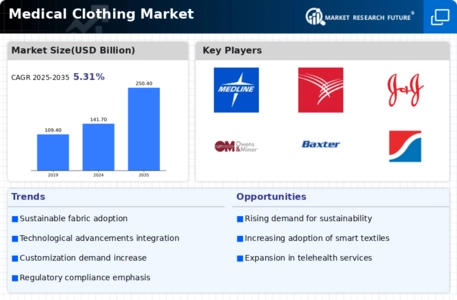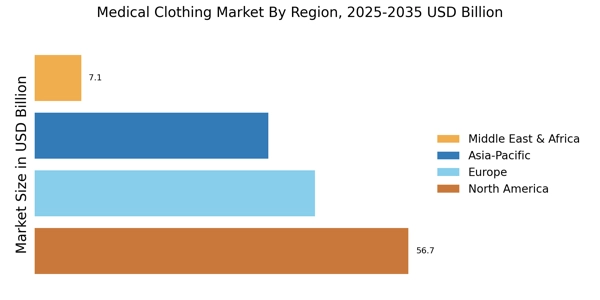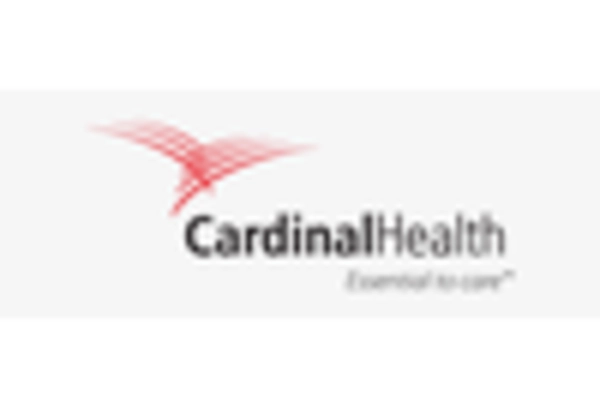Growing Healthcare Infrastructure
The expansion of healthcare infrastructure worldwide is a key driver of the Medical Clothing Market. As new hospitals and clinics are established, the demand for medical clothing rises correspondingly. This trend is particularly evident in emerging markets, where investments in healthcare facilities are increasing. Recent data suggests that the healthcare sector is expected to grow at a rate of 8% annually, thereby boosting the need for various types of medical apparel. This growth presents opportunities for manufacturers to cater to a broader audience, ultimately shaping the landscape of the Medical Clothing Market. The interplay between infrastructure development and medical clothing demand is likely to remain a critical factor in the industry's evolution.
Increased Focus on Sustainability
Sustainability has emerged as a pivotal driver in the Medical Clothing Market. As healthcare organizations strive to reduce their environmental footprint, there is a growing demand for eco-friendly medical apparel. This includes clothing made from organic materials and those that are recyclable or biodegradable. Recent studies indicate that the market for sustainable medical clothing is likely to witness a growth rate of approximately 5% over the next few years. This shift not only aligns with global sustainability goals but also appeals to environmentally conscious consumers and healthcare providers. Consequently, manufacturers are increasingly investing in sustainable practices, thereby influencing the overall dynamics of the Medical Clothing Market.
Rising Demand for Protective Gear
The increasing emphasis on safety and hygiene in healthcare settings drives the demand for protective medical clothing. As healthcare facilities prioritize the well-being of both patients and staff, the Medical Clothing Market experiences a surge in the need for gowns, masks, and gloves. According to recent data, the market for protective medical clothing is projected to grow at a compound annual growth rate of approximately 7% over the next five years. This growth is attributed to heightened awareness of infection control and the necessity for personal protective equipment in various medical environments. Consequently, manufacturers are innovating to meet these demands, leading to a more diverse range of products within the Medical Clothing Market.
Regulatory Compliance and Standards
The Medical Clothing Market is significantly influenced by stringent regulatory requirements and standards imposed by health authorities. Compliance with these regulations ensures that medical apparel meets safety and quality benchmarks, which is crucial for protecting healthcare workers and patients alike. As regulations evolve, manufacturers are compelled to innovate and adapt their products to meet these standards. This compliance-driven approach is expected to propel the market forward, with projections indicating a steady growth rate of around 4% in the coming years. The emphasis on regulatory adherence not only enhances product quality but also fosters consumer trust in the Medical Clothing Market.
Technological Innovations in Fabric Production
Advancements in fabric technology are transforming the Medical Clothing Market. Innovations such as antimicrobial fabrics, moisture-wicking materials, and breathable textiles enhance the functionality and comfort of medical apparel. These developments not only improve the user experience but also contribute to better patient outcomes. For instance, the integration of smart textiles that monitor vital signs is gaining traction, indicating a potential shift in how medical clothing is perceived and utilized. The market for technologically advanced medical clothing is expected to expand significantly, with estimates suggesting a growth rate of around 6% annually. This trend reflects a broader movement towards integrating technology into healthcare solutions, thereby reshaping the Medical Clothing Market.


















Leave a Comment